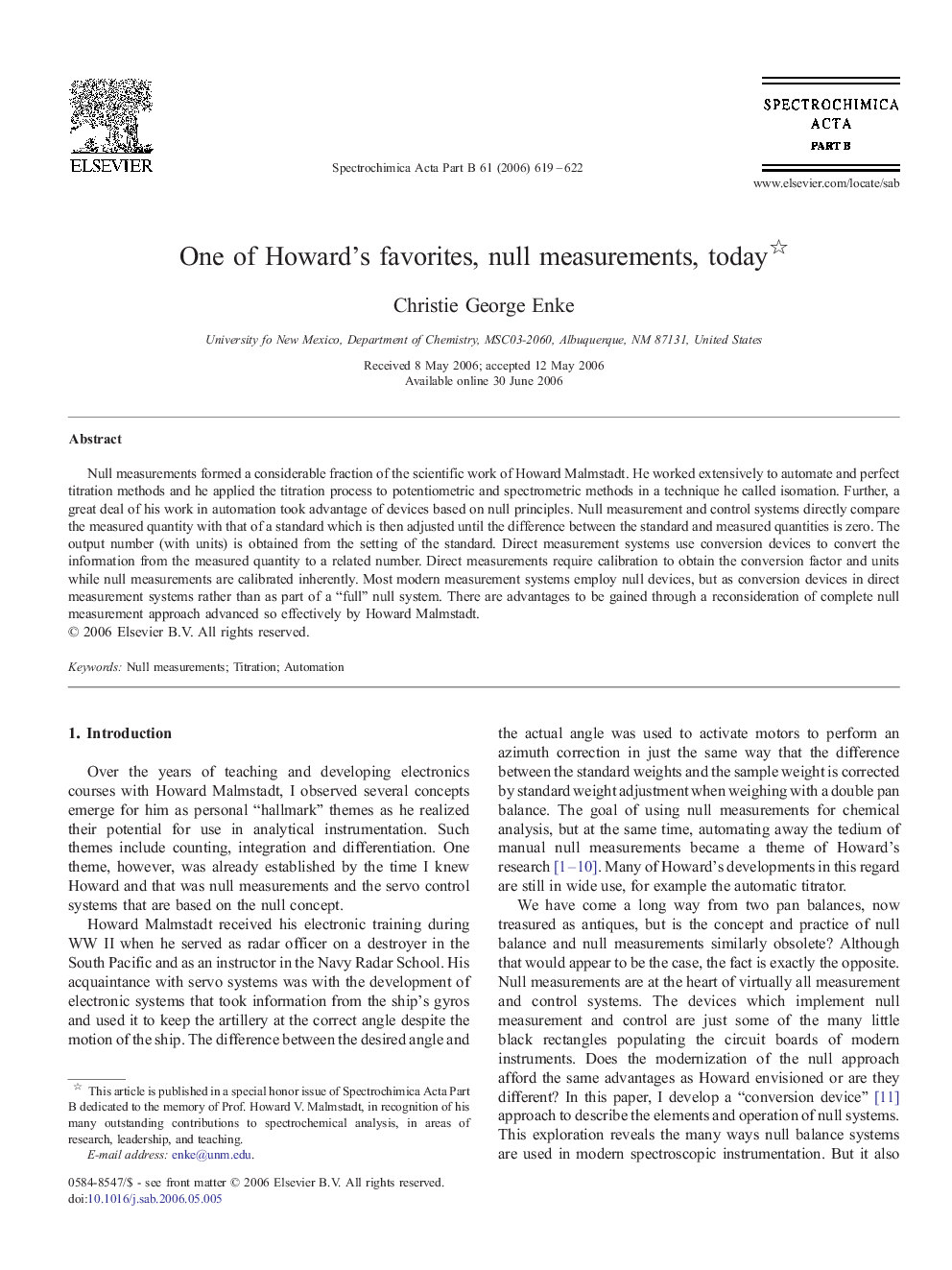| Article ID | Journal | Published Year | Pages | File Type |
|---|---|---|---|---|
| 1241034 | Spectrochimica Acta Part B: Atomic Spectroscopy | 2006 | 4 Pages |
Abstract
Null measurements formed a considerable fraction of the scientific work of Howard Malmstadt. He worked extensively to automate and perfect titration methods and he applied the titration process to potentiometric and spectrometric methods in a technique he called isomation. Further, a great deal of his work in automation took advantage of devices based on null principles. Null measurement and control systems directly compare the measured quantity with that of a standard which is then adjusted until the difference between the standard and measured quantities is zero. The output number (with units) is obtained from the setting of the standard. Direct measurement systems use conversion devices to convert the information from the measured quantity to a related number. Direct measurements require calibration to obtain the conversion factor and units while null measurements are calibrated inherently. Most modern measurement systems employ null devices, but as conversion devices in direct measurement systems rather than as part of a “full” null system. There are advantages to be gained through a reconsideration of complete null measurement approach advanced so effectively by Howard Malmstadt.
Keywords
Related Topics
Physical Sciences and Engineering
Chemistry
Analytical Chemistry
Authors
Christie George Enke,
